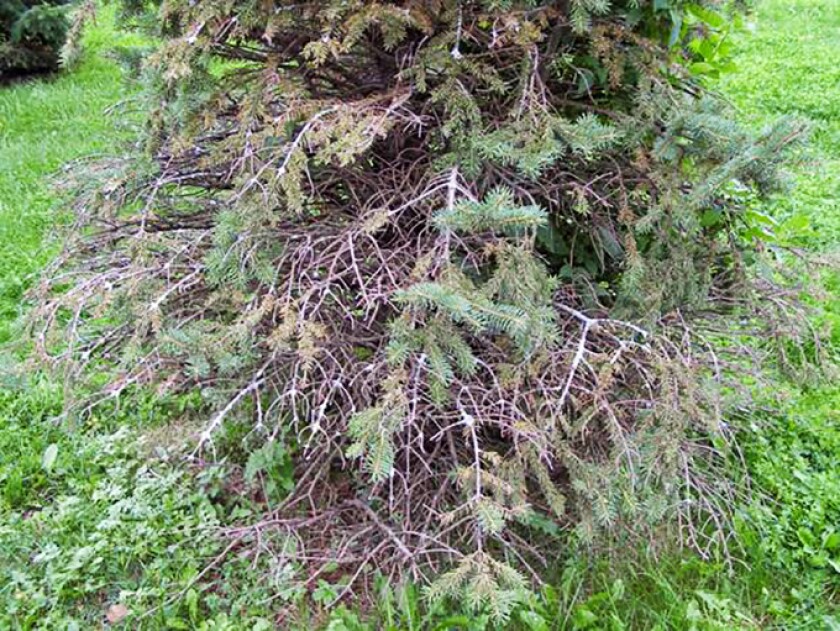Many of our local conifers are really beginning to look ragged, and the questions have come pouring in!
To determine why your tree is ailing, you first need to know exactly what kind of conifer you have- fir, spruce, hemlock, cedar, larch or pine.
Most needle diseases are caused by fungi which occur on specific types of trees. Needle diseases often kill portions of the crown, including the important terminal shoots. Conifers, unlike broad-leaved species, usually are not able to grow new needles when defoliated. So if you have an ailing conifer, it is probably never going to look any better than it does right now.
Colorado blue spruce has been a favorite tree in Minnesota because of its attractive size, shape, and color. Over the past 20 years evidence shows that the Colorado spruce was not meant for our climate. Colorado spruce will do well for about 20 years and then develop Rhizosphaera needle cast or Cytospora canker. Colorado spruce is not typically recommended for Minnesota gardens because of the problems associated with them as they mature. If you are set on spruce, a better choice for our area would be a native spruce, such as a Black Hills spruce, or a Norway spruce.
Rhizosphaera needle cast
ADVERTISEMENT
• Infected needles may look yellow and mottled by mid to late summer.
• Infected needles turn brown or purplish brown by late winter or early spring.
• Newly growing needles in the spring do not show symptoms. Needles closest to the trunk of the tree (the older needles) are often discolored while the needles at the tips of the branches remain green.
• Infected needles typically fall off in the summer, 12-15 months after the initial infection. Infected trees have thin canopies.
• Damage typically starts on the lower branches and moves up the tree.
• After three to four years of severe infection the lowest branches may begin to die.
Stigmina needle cast
Trees with symptoms and signs almost identical to Rhizosphaera needle cast were often found to be infected with the fungus Stigmina lautii. To differentiate between the two diseases,, send a sample to the University of Minnesota Plant Disease Diagnostic Clinic.
ADVERTISEMENT
Sudden (Spruce) Needle Drop (SNEED)
SNEED causes older needles to turn yellow, then brown. Affected branches may be scattered through the canopy. Frequently, by autumn, all needles on the affected branches fall off except the newest needles on the tips of the branches. Eventually the canopy thins, sometimes leaving bare branches.
Cytospora canker
• Needles on one or more branches turn completely brown or purplish brown then fall off.
• Scattered dead branches occur throughout the tree, often starting on the lower branches and then spreading upward.
• Clear to white to bluish-white resin encrusts cankers on infected branches.
For more information about Spruce diseases, please visit: www.extension.umn.edu . Until next time, happy gardening!
ADVERTISEMENT









